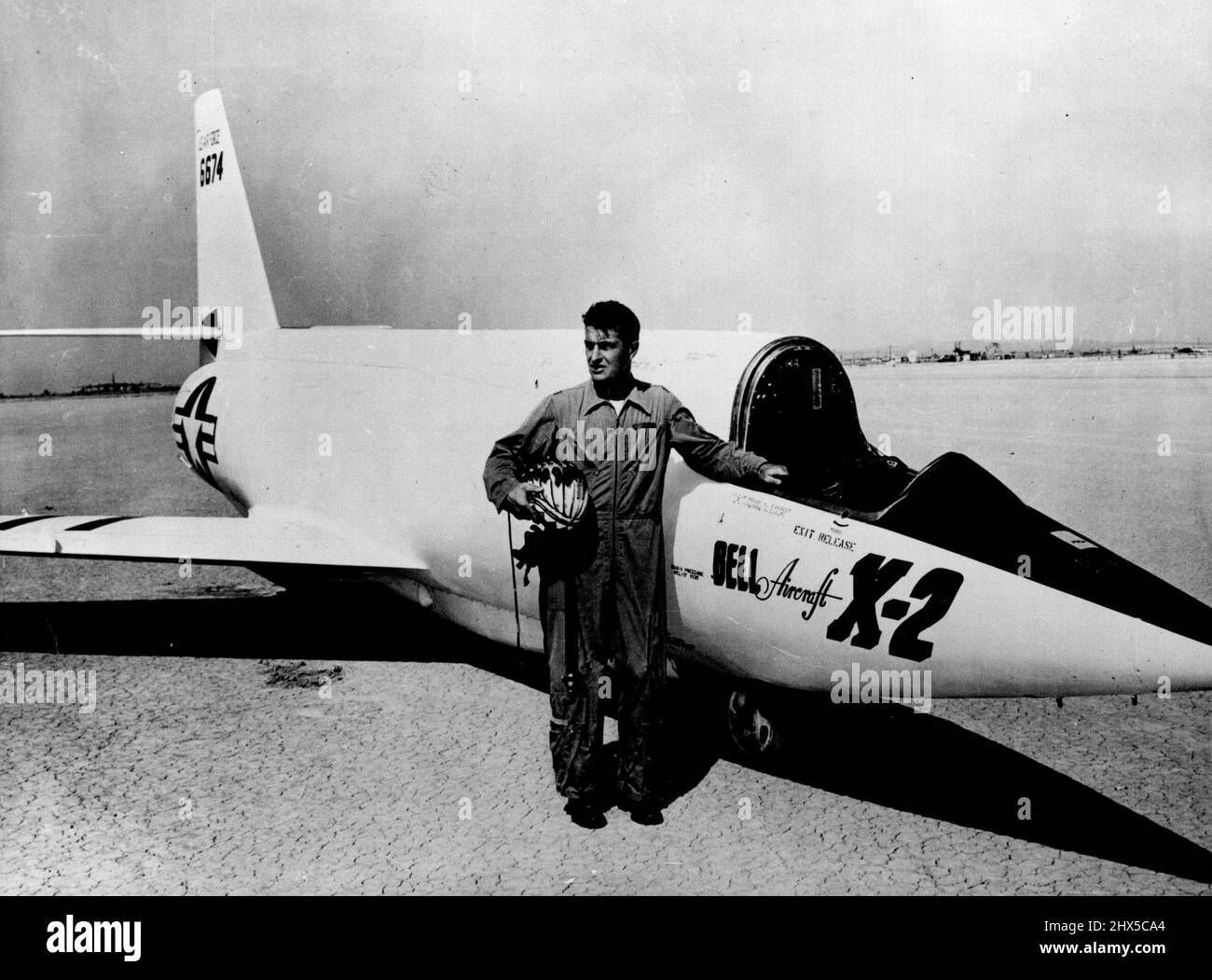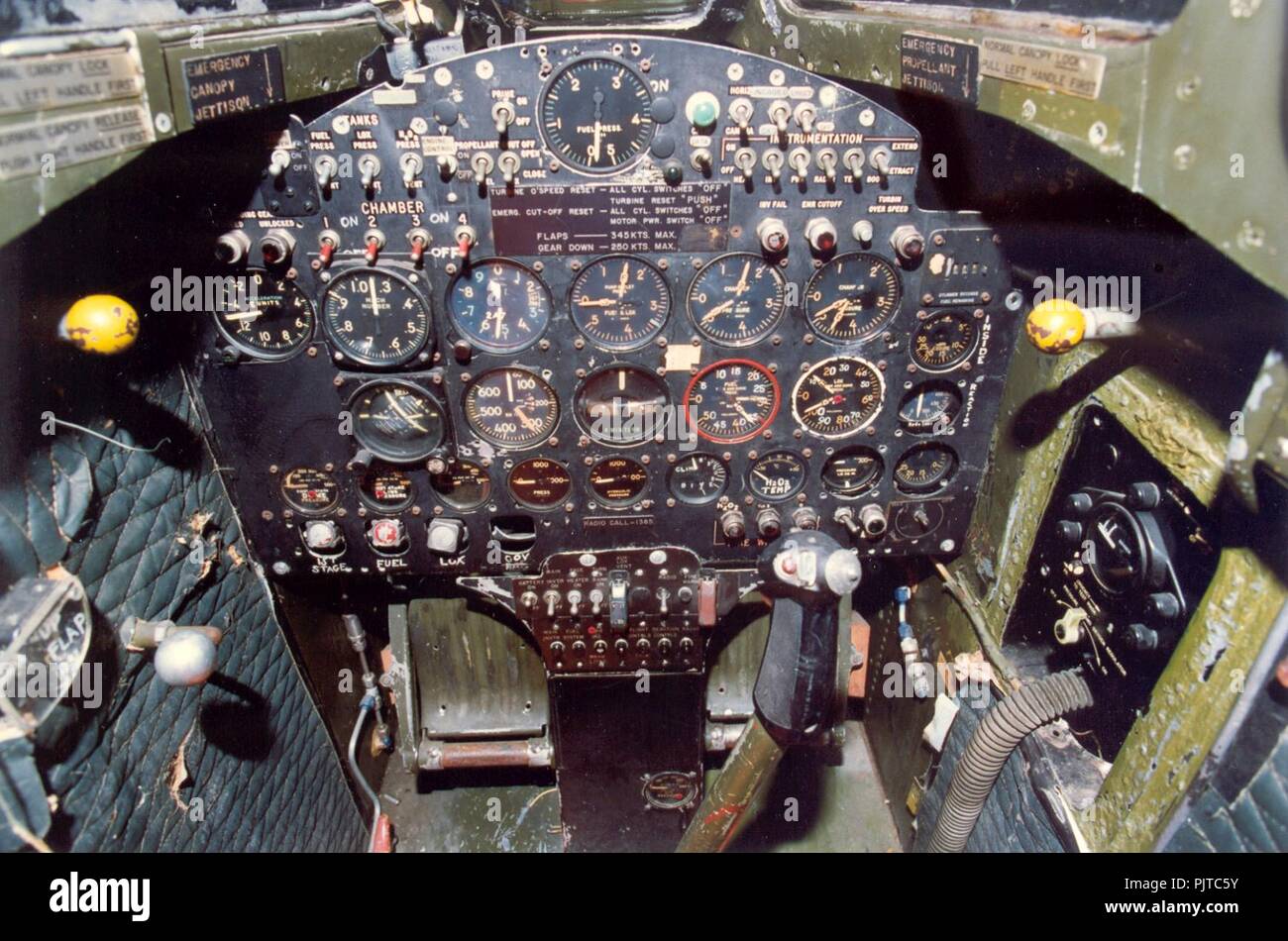Bell X 2 - Bell X-2 No. 2 with collapsed nose gear after landing on the first glide flight on 22 April 1952 at Edwards Air Force Base.
) was an X-Plane research aircraft built to study flight characteristics in the Mach 2-3 range. The X-2 was a rocket-powered research aircraft jointly developed by the Bell Aircraft Corporation, the United States Air Force and the National Advisory Committee for Aeronautics (NACA) in 1945 to explore and extend the aerodynamic problems of supersonic flight at the high speeds and altitude regimes achieved with the earlier X -1 series of research aircraft.
Bell X 2

The Bell X-2 was designed to provide a vehicle to investigate flight characteristics at speeds and altitudes exceeding the capabilities of the Bell X-1 and D-558II, while also studying aerodynamic heating problems in the so-called "thermal thickets".
Bell X 2 (x Planes No. 6)
The Bell X-2 had a longer development period due to the necessary advances in aerodynamic design, control systems, materials that maintain adequate mechanical properties at high temperatures, and other technologies that had to be developed. Not only did the X-2 propel manned flight to speeds, altitudes and temperatures that exceeded all other aircraft of the time, it also pioneered throttled rocket engines in US aircraft (previously demonstrated on the Me 163B during World War II) and digital flight simulation.
The XLR25 rocket gine built by Curtiss-Wright was based on the JATO continuously variable gine built by Robert Goddard for the Navy in 1942.
Providing adequate stability and control for aircraft flying at high supersonic speeds was only one of the major difficulties that aeronautical scientists faced as they approached Mach 3. For they knew that at speeds in this region they would also begin to counteract a "thermal barrier". strong heating effects due to aerodynamic friction. Constructed of stainless steel and a copper-nickel alloy, K-Monel, and powered by a liquid propellant (alcohol and oxygen), twin-chamber XLR25, 2,500 to 15,000 lbf (11 to 67 kN) sea level pressure, continuously variable gas rocket Gine was developed Bell X-2 with swept wings to study the supersonic region.
After a parachute launch from a modified B-50 bomber, on June 27, 1952, Bell test pilot Jean "Skip" Ziegler completed the first unpowered glide flight of an X-2 at Edwards Air Force Base. Ziegler and aircraft No. 2 (46-675) were later lost in an explosion on 12 May 1953 during a captured flight intended to check the aircraft's liquid oxygen system.
List Of X Planes
A B-50 crewman, Frank Wolko, was also killed during the incident. The wreckage of the plane fell into Lake Ontario and was not recovered.
Lt. Col. Frank K. "Pete" Everest completed the first powered flight in Aircraft No. 1 (46-674) on November 18, 1955. By the time of its ninth and final flight in late July 1956, the project was years behind schedule, but it had set a new speed record of Mach 2.87 (1900 mph, 3050 km/h). Around this time, the YF-104A demonstrated speeds of Mach 2.2 or 2.3 in a fighter configuration. The X-2 did what it promised, but not without difficulties. At high speeds, Everest reported that the flight controls were only marginally effective. The main factors were high speed pressure changes and the aeroelasticity of the fins. In addition, simulation and wind tunnel studies combined with data from the flights indicated that the aircraft would encounter very serious stability problems as it approached Mach 3.
Captains Iv C. Kincheloe and Milburn G. "Mel" Apt were assigned the "hull extension" task, and on 7 September 1956 Kincheloe became the first pilot ever to climb above 100,000 feet (30,500 m) flying the X-2 to a peak elevation of 38,470 m (126,200 ft). Just 20 days later, on the morning of September 27, Apt was launched from the B-50 for his first flight in a rocket plane. He was instructed to follow the "optimal maximum energy flight path".
With nozzle extensions and a longer engine run than normal, the Apt flew an exceptionally accurate profile; He was the first human to exceed Mach 3, reaching Mach 3.2 (2,094 mph, 3,370 km/h) at 65,500 feet (19,960 m).
Bell X 2 Starbuster 6675
The flight had been faultless up to this point, but shortly after reaching top speed, Apt attempted a bank while the aircraft was still above Mach 3 (trailing instruments may have indicated, or perhaps feared, that he was flying at a lower speed than he had also strayed far from the safety of his landing place on Rogers Dry Lake).
The X-2 fell violently out of control and it struggled with three sequential coupling modes, control coupling, inertial roll coupling and supersonic spin.
Had passed Chuck Yeager in the X-1A nearly three years ago. Despite being subjected to much higher inertial forces in the vehicle, Yeager was able to recover. Apt tried to recover from a spin but couldn't. The rudder lock was still activated when spin recovery was attempted. He fired the ejector pod, himself equipped with only a relatively small drogue parachute. Apt was probably deactivated by the strong release forces. As the pod fell to the desert floor for several minutes, he did not eject to allow him to use his personal parachute before ground impact and was killed.
The aircraft continued in a series of slides and stalls before landing and breaking into three pieces (separated from the capsule). A proposal to salvage the aircraft and modify it for a hypersonic test program was not approved. The plane was scrapped.
Bell X 2 (1:72)
Subsequent investigations into the X-2's fatal flight revealed a number of factors that contributed to the crash—primarily focusing on Apt's decision to continue rotating the aircraft above Mach 3. Some cited his lack of experience with rocket aircraft, but, as historian Chris Petty notes, "He had actually flown the complex profile almost perfectly, but this, combined with extra seconds of thrust from the XLR25 [gine], had the X-2 well over the limit." of knowledge and carried into the uncertain stability predicted by GEDA [Goodyear electronic differential analyzer]."
In short, Petty suggests that Apt was doing its job too well and may have been pressured to exceed Mach 3 by the AFFTC and conflicting priorities. Petty quotes Base Commander Geral Stanley Holtoner: "I think every superior of mine has criticized himself because if we had told that kid [Apt] to stop at a certain speed, it wouldn't have happened."
One point that became clear before the investigation was that the X-2's escape mechanism was woefully inadequate. According to the New York Times, which reported on the event, Everest had criticized the relatively new detachable capsule, claiming that "a certain level of safety was sacrificed in lieu of delaying X-2 flight testing while the escape mechanism was modified".

Another NACA research pilot, Scott Crossfield, described it more bluntly as a "way to commit suicide to avoid being killed."
Bell X 2 Starbuster
While the X-2 had provided valuable research data on aerodynamic heat build-up at high speed and extreme flight conditions (although it is unclear how much, given that the Lockheed X-7 and IM-99 were among the winged vehicles in service at comparable or higher speeds in the era), this tragic event ended the program before the National Advisory Committee for Aeronautics could begin detailed flight research on the aircraft. The search for answers to many of the mysteries of High Mach flight had to be postponed until the arrival of the most advanced of all experimental rocket planes, the North American X-15, three years later.
Sig p365 tulster holster, sig p365 iwb holster, sig holsters p365, sig p365 sas holster, sig p365 xl holster, sig p365 hybrid holster, appendix holster sig p365, safariland holster sig p365, sig p365 belt holster, sig p365 holster, sig p365 purse holster, sig sauer p365 holster

0 Comments